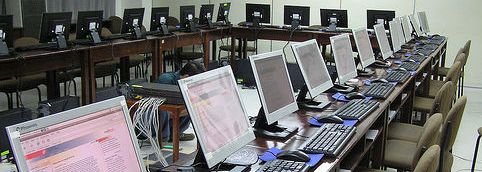 Advances in technology have resulted in many companies utilising virtualisation for their servers. The benefits of this have spurred on many of those companies to apply the same technology to their desktop computers.
Advances in technology have resulted in many companies utilising virtualisation for their servers. The benefits of this have spurred on many of those companies to apply the same technology to their desktop computers.
A Virtual Desktop Infrastructure (VDI) is designed to run desktop operating systems and applications inside virtual machines on servers in a data centre, and these are often referred to simply as virtual desktops. The virtual desktop is accessed via a desktop PC client or thin client via a remote display protocol, therefore many of the features previously loaded on local systems are still accessible but are centrally managed.
VDI Advantages / Pros
Typically, if a user experienced a PC problem previously, a member of IT staff must physically go to the PC to fix the problem. This can prove difficult if the user is at a remote site or is working out in the field. Either the IT technician must travel out to visit the user, or the PC must be sent back to the main office for repair. In either case, productivity suffers as the user no longer has a machine, or the technician is out of the office. With a VDI, most problems such as this can be dealt with remotely from within the data centre.
Desktop applications must be constantly updated, or patches and security updates frequently installed to protect systems. On occasion, the operating system may be upgraded across the organisation. Technicians previously had to go to every PC in order to update, but a VDI enables this to be within the data centre and then rolled out across the company en masse. The VDI user is able to switch between operating environments, such as Windows 8 and Windows XP. VDI simplifies desktop management and administrative tasks as every attached workstation can use the same image. A new user of the system can also be up and running quickly.
From a user perspective, VDI gives almost full functionality of their desktop operating system and applications with less hardware failure. Failure rates are low, but in the event of a single session failure for a user, a VDI allows the IT department to isolate that machine from others so that the problem does not spread. VDI also allows the user to access business email and corporate documents from their own personal device, from anywhere. Other users at another office can also easily access those same documents.
Another benefit of using VDI is that security can more easily be maintained and compliance regulations met. Desktop security, backup and data protection are centralised, therefore the integrity of the applications and their data can be safeguarded at the data centre.
VDI disadvantages / cons
Implementation of a VDI requires a major investment in server hardware. Storage and network infrastructure may also have additional cost implications, exceeding the expense of purchasing a basic PC for every individual user.
If that one server goes down, all users will be unable to work, whereas if a single PC goes down, only one user is affected.
Although all workstations can use the same image, unique images are required for each of those users who needs a different set of applications or who needs the capability to save personal settings or install their own applications. This quickly multiplies the storage requirement on the VDI server.
The task of managing desktop using VDI is a challenge when users download and install personal software, such as instant messaging. Difficulties can arise through the accidental downloading of malware applications. If this happens to a remote user, often the problem does not come to light for some time.
Keeping unlicensed software off company systems can also be a problem. Sometimes this is done accidentally, but occasionally commercial software is passed around intentionally, and such violation of the law leaves the company liable.
When implementing a VDI, the potential impact on the network needs to be assessed. Although there are specialised transport protocols between remote client desktops and the centralised virtual servers, limited bandwidth and other applications running such as file transfers and social media can result in remote users experiencing such problems as delayed keystrokes and mouse movements. Users expect a seamless desktop experience, so this is a frustration at best, but at worst can adversely affect productivity.
Before investing in VDI, it is noted that most adopters have been faced with spiralling support and operational costs, together with complex deployment situations. It is without doubt that VDI has huge benefits which can offset any negatives. Because of those benefits, operational and support costs are lower, which can prove to be a more significant long-term saving than server hardware investment.
Read more on Virtualization technology here.
